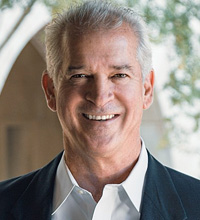(Author: Celina Smith)
Research Applied précis prepared by Thomas V. Schwarz, Black Forest, LLC
A jolt is a ‘sudden and unprecedented’ event that has the potential to greatly impact a firm’s future. An ‘environmental’ jolt is an event that occurs outside of the firm; it is a force originating within the economic, political, or social environment. A jolt may have either a desirable or undesirable effect upon the firm, which may in part be determined by the mindset and response of the firm’s leadership. The question of interest in this piece is whether family-owned business leaders differ from non-family business leaders in their assessment and response to environmental jolts.
There are good reasons to suspect that indeed there are differences for family firms since much earlier research (summarized well within this piece for the interested reader) has shown family firms to have a wider range of interests beyond purely financial returns; that is, non-economic goals add complexity not as readily present within non-family firms. Unpredictable internal family dynamics and emotional drama can cloud judgment in the presence of a jolt. Given that a jolt disrupts the status quo, it can disrupt the family and its leadership as well.
Some of the non-economic motives examined within have been labeled the FIBER dimensions in previous research and include:
- the importance and value of the family’s control and influence
- their personal identification with the firm
- the binding social ties that come with owning a firm within the community
- the personal and family emotional attachments
- the renewal of bonds as ownership passes between generations
The jolt studied herein is the July 6, 2005 host city announcement for the 2012 Olympic Games. Unexpectedly, the UK was selected as the winner. General euphoria occurred within the UK, except for firms located physically in East London that would be forced to relocate. The differentiated responses of firms being forced to relocate was the basis of the analysis. Was this environmental jolt good or bad? Using a multiple case study approach of three family and two non-family firms, the author demonstrates that while the answer depends upon business issues such as local suppliers and branding, it is also somewhat dependent on the mindset and response strategy of the firm’s leadership.
What was uniquely identified within this study were two unexpected factors beyond FIBER that strongly differentiated the firms’ responses to the jolt. These two factors or themes were family business place attachment and the longevity of the family business heritage. Differentiated attachment among the firms to their business place of operation was seen to be reflective of three separate attributes; attachment to business location, business identification with location, and product identification with location. Table 2 provides some actual quotes which describe each attribute.
For those who work closely with family firms, this research provides an understanding of the strong role that physical place can play for a family. Whether dealing with issues of growth, decline, sale or other significant shifts for the family firm, it is informative to understand how place attachment and family identification are functioning. Further, the attachment to family business longevity and the recognition and pride in its specialness differentiated the family firms among themselves (see Table 2). As in most of the research we see, no two family firms are the same. These differences are well illustrated within the paper in the sections highlighting response strategies, the Contesting Approach, the Proselytizing Approach, and the Brinkmanship Approach.
It is oftentimes difficult for advisors to guide families away from historical attachments … a jolt brings some attachments to the foreground and can become more apparent to all if one looks behind the behaviors displayed. This piece provides an excellent example to gain insight into the presence of attachments and their impact upon the family firm and could provide an interesting basis for a case discussion among family members in a workshop setting.
The interested reader may wish to read the Research Setting and Context Background sections of the paper that describe the details of the jolt. Further, the Case Profiles section adds the very real elements for the five firms that were the focus of the study. It is evident that the uniqueness of all five firms contributed greatly to the varied responses observed — so much like the way it really is!
About the contributor
 Thomas V. Schwarz is an FFI Fellow, a former FFI board member, and one of the original editors of The Practitioner. He is a principal with Black Forest LLC and can be reached at Thomas@blackforestbusiness.com.
Thomas V. Schwarz is an FFI Fellow, a former FFI board member, and one of the original editors of The Practitioner. He is a principal with Black Forest LLC and can be reached at Thomas@blackforestbusiness.com.
.





